Our audio journey should mirror Bruce Lee’s experience on his kungfu learning journey.
Before I studied the art, a punch to me was just like a punch, a kick just like a kick.
After I learned the art, a punch was no longer a punch, a kick no longer a kick.
Now that I’ve understood the art, a punch is just like a punch, a kick just like a kick.
When you first approached diy audio, a resistor, a capacitor is just another
component. Then after you have read so much on the Net, tried some in your
circuitry, a resistor/capacitor is more than just that. There’s carbon/metal/tantalum film resistors, constructed foil type, wirewound, non-inductive and so on… For caps, you worry about its dielectric material. Is it teflon? Paper in oil? Polypropylene?…
But when you start accepting that a resistor is just a resistor and a capacitor is just a capacitor; when you begin to look beyond its details and could now see the big picture, that’s when you reach “a higher level”.
You should have enough opinion and experience to know where in the circuit to use what. By that time, you should be exploring the circuitry in greater detail than fussing about the components.
Sure, sound is the sum of every component in the circuitry but to be able to
transcend just looking at components, and going a deeper level, that’s when you have matured as a diyer.
It’s like when you first started diy audio, you are told tube amps sound better than solid state but now you should be able to see that tubes or ss, as long as the circuitry is good, the implementation takes into account
electrical/psychoacoustics consideration, both technologies are capable of great
sound.
Remember the fuss started by 47 Labs with its Gaincard amplifier? Many ditched their tube amps for it, just like we lost count the number of folks who prefer Charlize over their amps. (BTW, count how many audio companies offering gainclones these days…)
Who would have thought that LDR volume controls could trounce Transformer Volume Controls in the region of dynamics, transparency and immediacy? Virtues which TVCs should reign supreme?
Why heck who would have believed even a volume control chip implemented ala Beyonce could already outperform TVCs?
Who would have believed a 10W Class T Charlize could out-sung tube amps whose filaments already consume more than 10W?!
So stop carrying your hifi myths. Unlearn what the industry tells you and just rely on your ears.
So tubes or no tubes, LDR or TVC, whichever the route, if it sounds better, than that’s all that matters!
—————————————————————————–
On the other hand, what Bruce Lee is also telling us is that kicks and punches are just one of the elements of his art. There’s more to it than just kicks and punches.
Equally, in audio, there’s more to it than just tubes vs ss in amplifiers. There’s the preamp, the colume control, the DAC, the transport, or the phono stage, the turntable.. Moving downstream, speakers and not forgetting all the cables linking everything together, and the room where the system sits, and our state of mind…
Which means to say, if you focus only one element, say amps, it’s like just
focussing on kicks in martial arts. There will be a glass ceiling on how far you can go.
I’ve come across many diyers who only focus on ONE element of their system but do not go about holistically, to improve the sonics of every gear in his system.
It’s like an amp designer who tells the world he has built the best tube amp in the world but then when you look at the speakers and dac he’s using, you wonder how can he design such an amp…
Imagine this guy who claims he has built the amp to rival the Audio Note Ongaku but in his system he uses Bose mini sats and a $90 dvd player.
I could hear you say “He can’t be serious!” from here!
So what’s the point I want to make here?
Don’t go fussing too much about your audio components.
Approach sonic improvement like the Japanes – kaizen approach which is a
continuous improvement approach by studying every part of the system, then once
done, go through the whole system again.
So say you start with your amp. After improving your amp, focus on your DAC, then your transport, then your speakers etc. Then start all over again from your amp. Each time you improve something, it reveals the pluses and minuses of your system. Flaws obscured by your system’s lower resolution that were not heard before could be highlighted now and thus needs fixing. That piercing highs you heard may not be because of your tweeter, but your amplifier oscillating like crazy.
So you go round and round, in a cycle, improving each element of your system. And not just focus on just kicks.
System building is a dynamic process and continuous improvement is never static. It should be ongoing, it should be enjoyable and you should be having fun!
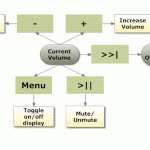


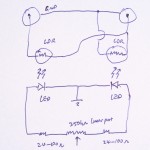
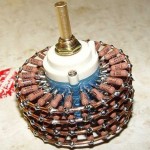
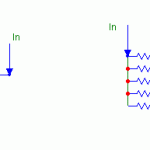

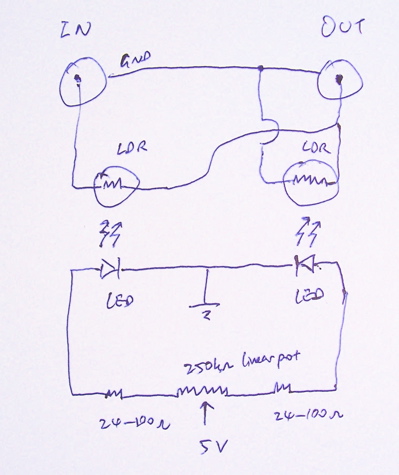

Hi Yeo, well there’s nothing to be added 🙂 absolutly wise words! and those “adressed” people should have a open mind and go for it -try to dive into an wonderful and always succesful experiment! They will never refuse it again 😉 Bye – Jochen
You forgot more important things, like the fuckin’ room treatments and the fuckin’ speaker placements…. No wonder you’re using sub obtimal electronics thinking they out-do tvc or valve amps… you forgot the 2 more important things ! 😆
“Moving downstream, speakers and not forgetting all the cables linking everything together, and the room where the system sits, and our state of mind… “
Anon above seems to have a negative state of mind ?
🙂 Well said, Yeo.
Strange enough that the above Anonymous don’t even have guts to reveal his nickname after being so offensive? WTF??
Have some guts, carry your balls with you… 😛
Fuck You what kind of nick name is “Benzene” anyway as it does not tell a think about you 😛
Tom I can only guess you’re like most ppl using sub obtimal electronics in real compromised room and most probably don’t give a damn on room treatments and real speaker placements to bring out the real sound in hi-fi. You guys are just kids here. :sigh:
Sayonara
Well said anon , isn?t it nice for me , at 50 still a kid hahahaha
Anonymous:
You’re experiencing inferior complexity. Consult a psychologist… :-*
Keep barking here for no reason…
What’s fucking wrong with you?
Oopss…people like you need to de-stress by insulting others.. 8)
Btw, pls check your spelling & go back to school, at least kids know how to spell words correctly. Not “obtimal”, but optimal
If you feel good by insulting people, by all means, pls continue, hehe….. :zzz
Fuck You again Benzene you are the one needing help trying to sway on other topics like typo spelling errors and so what the fuck that makes you, a better audio guru by harping on spelling errors?? Go listen to radio la fucker 😛 I bet your audio system sounds like a novice setup nia…
hi anonymous
we recommend horn speakers, and they don’t require much room treatment nor placement. the list isn’t exhaustive but you could certainly add room treatment and speaker placement to it.
if you read the gist of this article, i’m not favouring one technology over another, i’m just saying whichever yields better sonics, is the better one, and not to choose one just because it’s the “traditional favourite”.
so i’m not anti tvc nor valves. you sound like you feel threatened?
sub optimal electronics? if so, why do you even bother copying our dac and calling it your own design?
come on nicholas…
🙂
N.C from Pro……. Audio.?
Now i understand.
Oopss…why i’m wasting time here talking, should listen to the P.A. guru, go fuck myself & listen to radio with my novice setup.
Hahahaha……
I don’t understand why ppl have to pick on Yeo. He’s a designer and manufacturer of audio equipment. He designs and sells product within a certain price point ( as any other manufacturer ) If you don’t like his type of equipment, buy something else.
To put it into practical $$ terms, his stuff is not expensive, in countries that have near par value or higher than the USD. In my opinion, it’s totally not practical to put in US10,000 worth of isolation and room treatment, although you could if you have too much $$, and then invest in a decent setup from Yeo for about US4,000 ( various electronics ).
Speaker placement is a must. But room treatment ? Put it all on Magic racks that cost more than a Proton Saga ? There are consumers who have lower benchmark for what is termed hifi, and to them, maybe all this is not important. Who’s to say they are wrong ? It’s his money and ears
BTW, I’ve always liked Yeo’s toys. I have Charlize, Monica, etc… they are good product within X price point. I’m a practical person. You get what you pay for, and with his products, it’s good value for money.
check this out “anon” you will love it
http://www.audiogon.com/cgi-bin/cls.pl?preatran&1248026570&/diyparadise-EVA-LDR
I not only like yeo’s toys but he is real earnest person willing to breach new boundaries starting with the TDA 1545 dac to the LDR. Enjoyed our tea together in KL when you first shared the plans of Charlize. We should laud yeo’s efforts. Keep offering us new stuff and test the limit, good doesn’t need to be expensive. Audio nirvana is an iterative process, why? we can’t fight ageing, our hearing changes along with our choice of equipment over time
😐 this still does ot help me with my project….
thx for the flowers guys. my blogged response’s here.
http://diyparadise.com/blogs/2009/06/16/thanks-for-the-flowers/
Yeo
i do not post under anoymous nor do i believe in attacking other people’s belief
I actually concur with your writings, everybody has their own unique taste that is way we have different preferences for woman body parts.
Best
Nicholas
promitheusaudio
hi nicholas
thx for dropping by.
i didn’t specifically mention your name but somehow you felt the heat? i didn’t see anyone specifically mention your name either.
since i got your attention, when are you going to return my stuffs? stuffs i lent you few years ago to develop your own products?
4 hammond output trans
2 interstage trans
1 monica2 dac
yeo
hello, saw your diy speaker, would you mind to recommend your carpenter? looking one for making a speaker box. we have the design draw out , just need a carpenter…pls help. thanks a lot
hi kimi
there are carpenters and there are speaker builders.
carpenters are great for building furniture. when they build, emphasis is on aesthetics and functionality, but what is required for a loudspeaker enclosure, i’m afraid they have no idea.
many diyers get carpenters to build for them. when the sonics is below par, they blame the enclosure. a classic case of penny wise pound foolish.
as for our speakers, we build them ourselves.
yeo
Yeo, dun you feel selling hifi product in Malaysia is like building KLCC with bare hand ? Local ppl see moon rounder abroad than Malaysia..sigh 😡
hi wabun
well, doing this in malaysia has some advantages not possible in other countries, so i choose to focus on this.
yeo